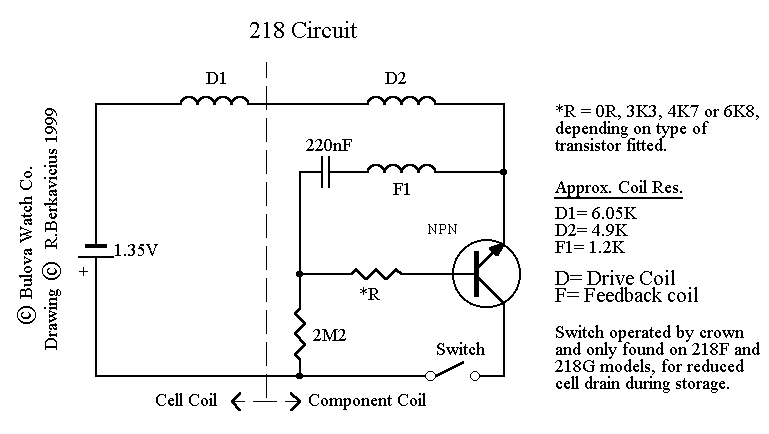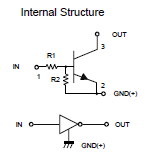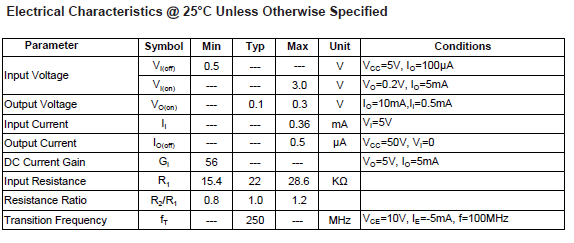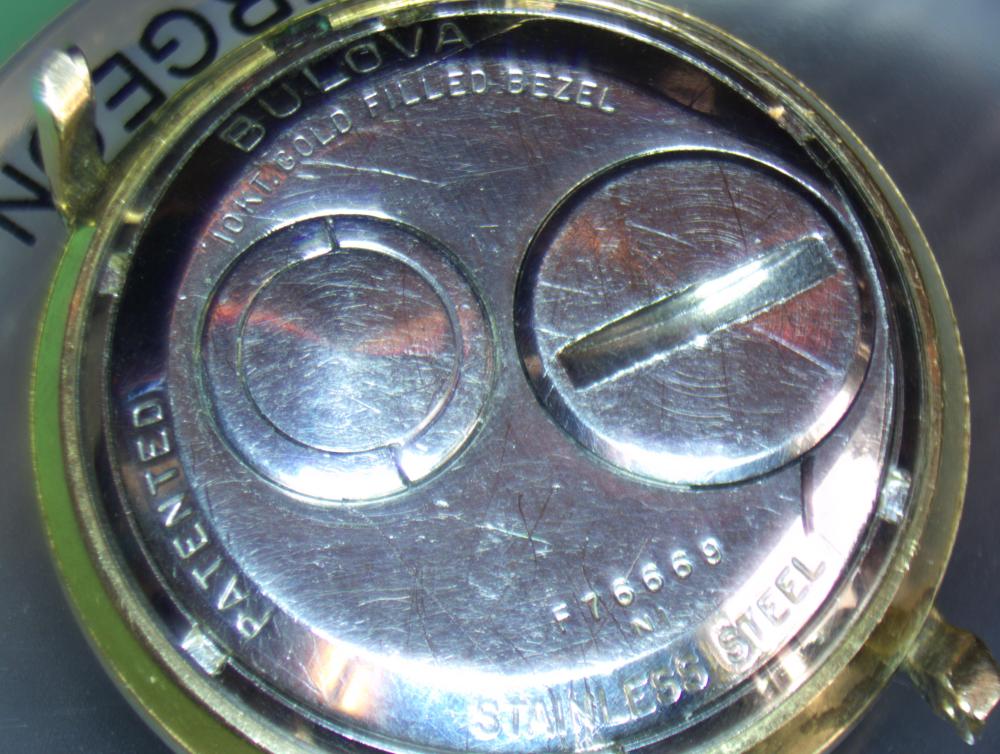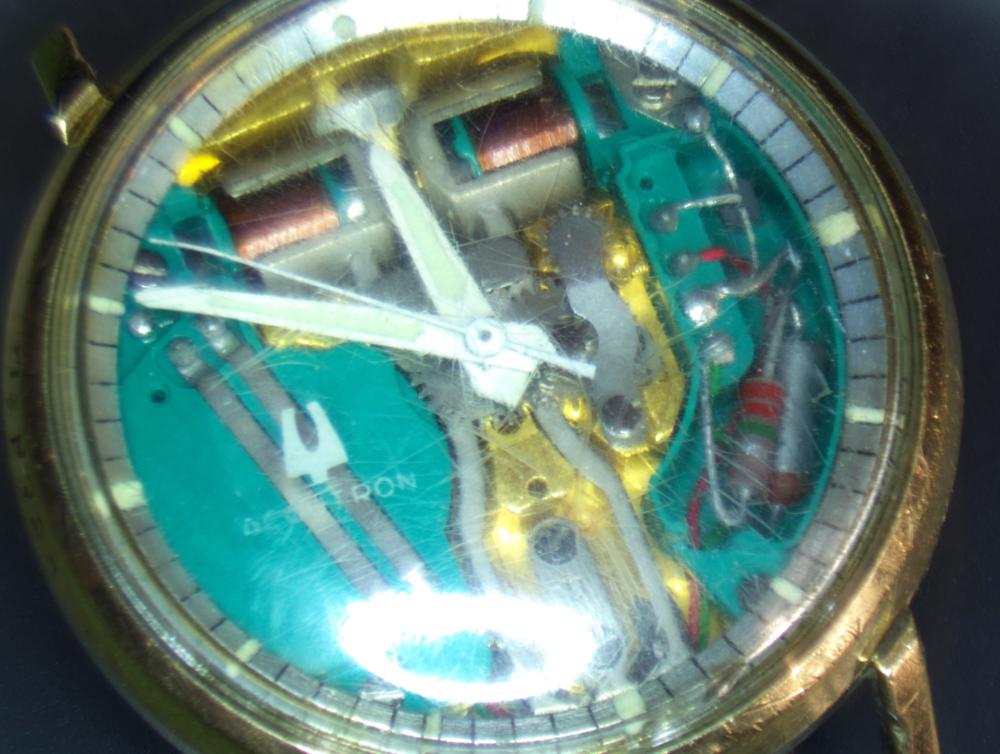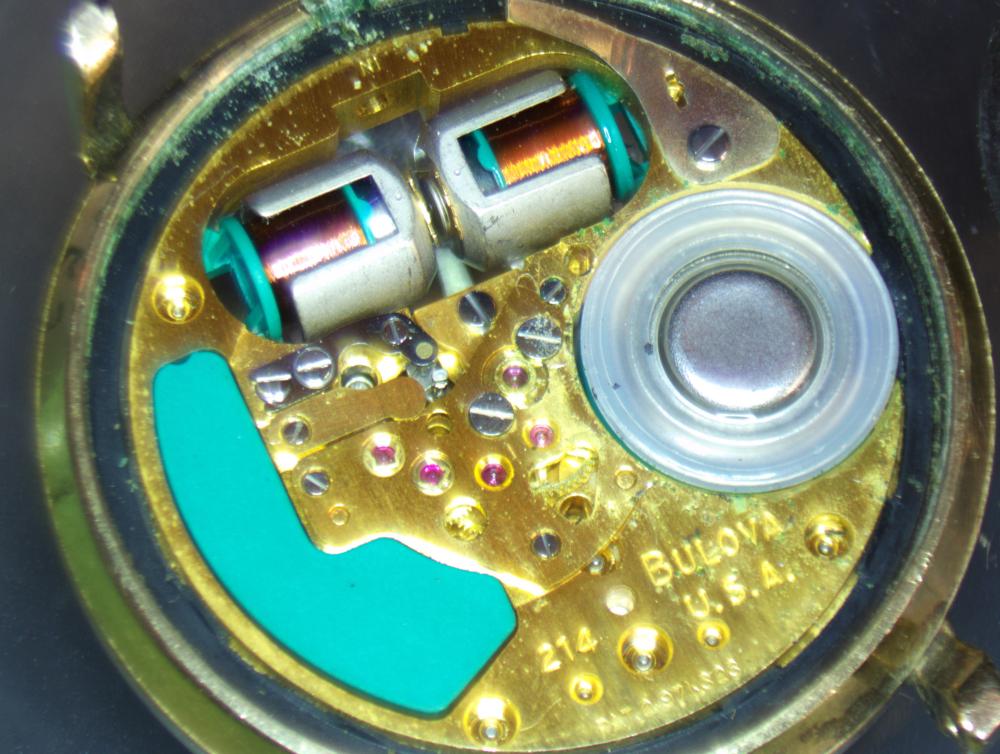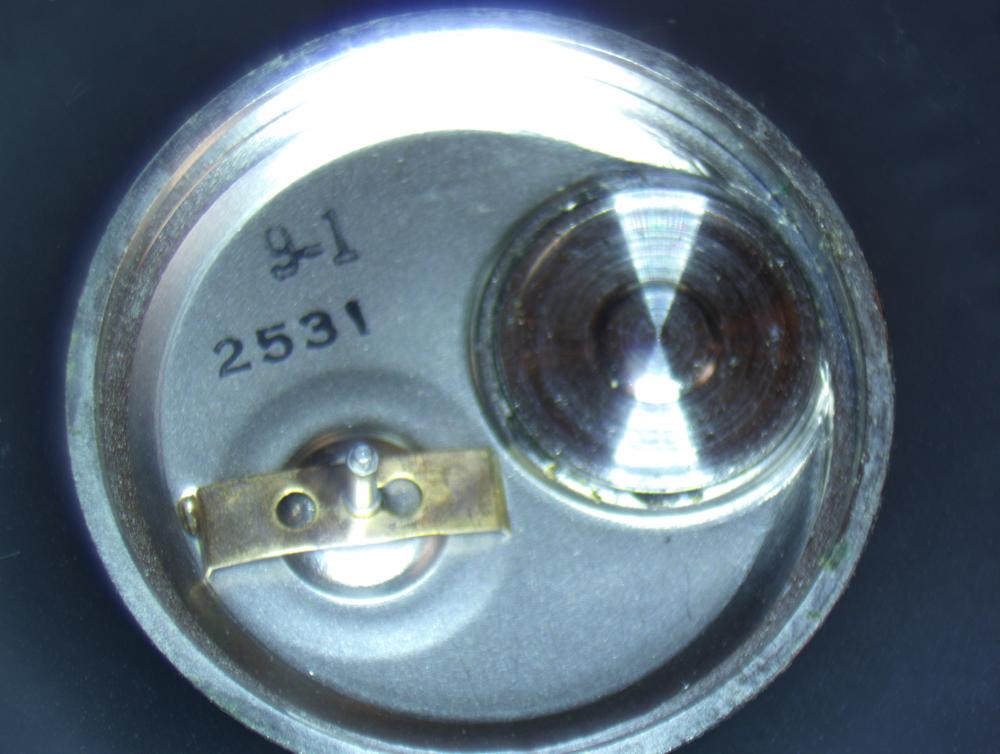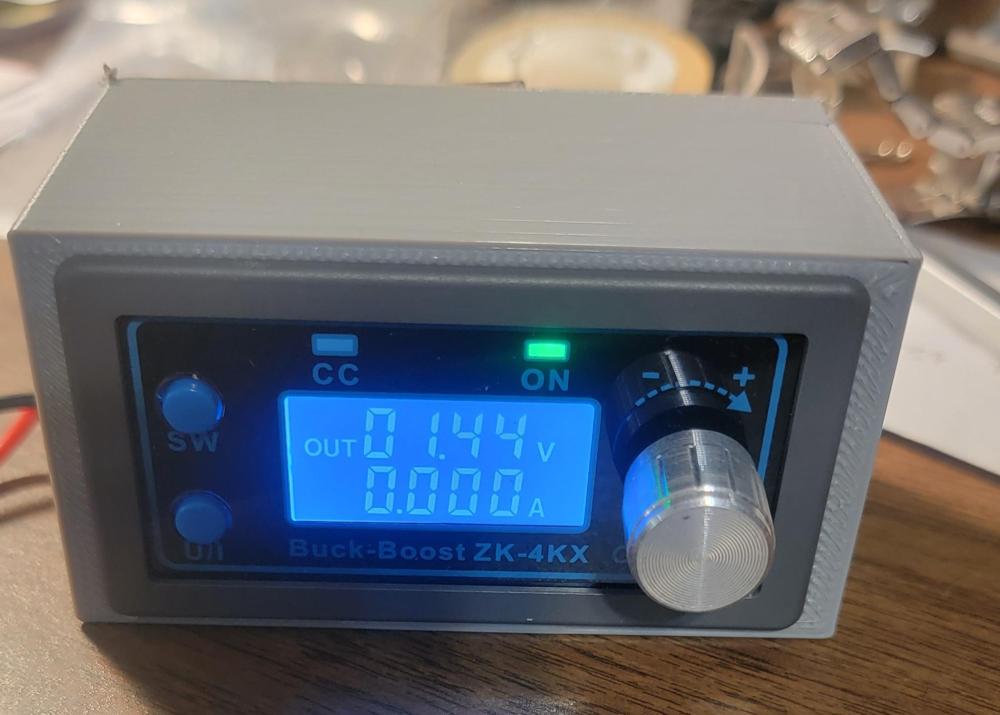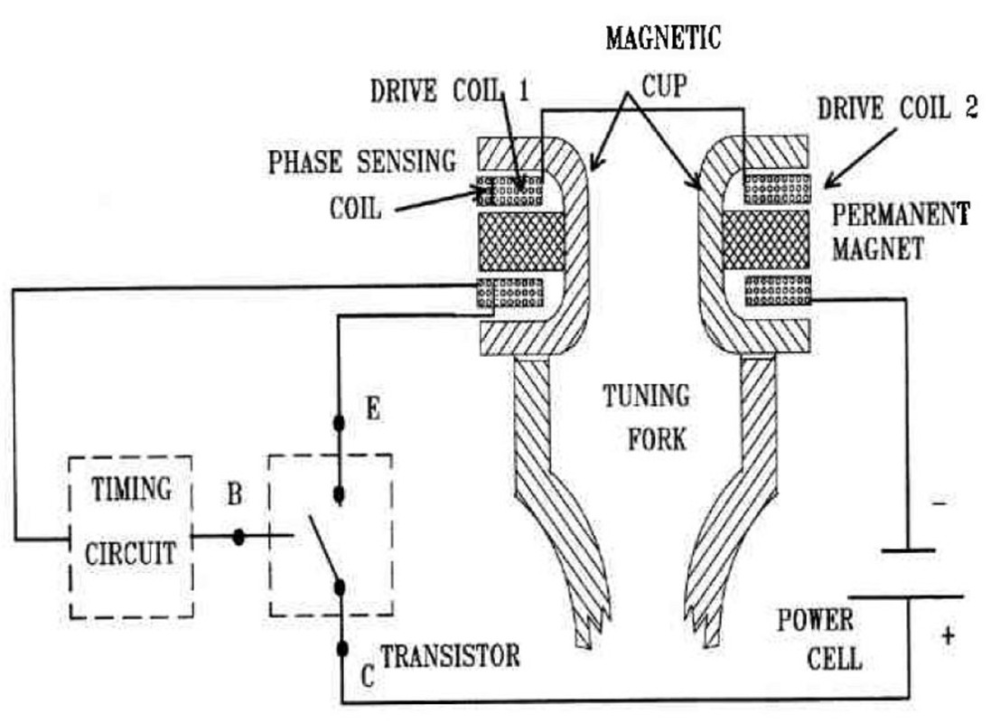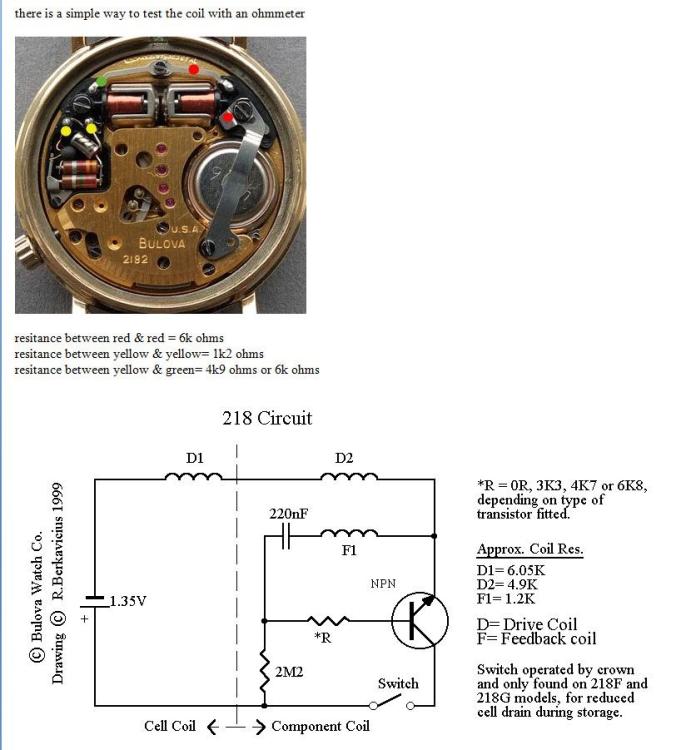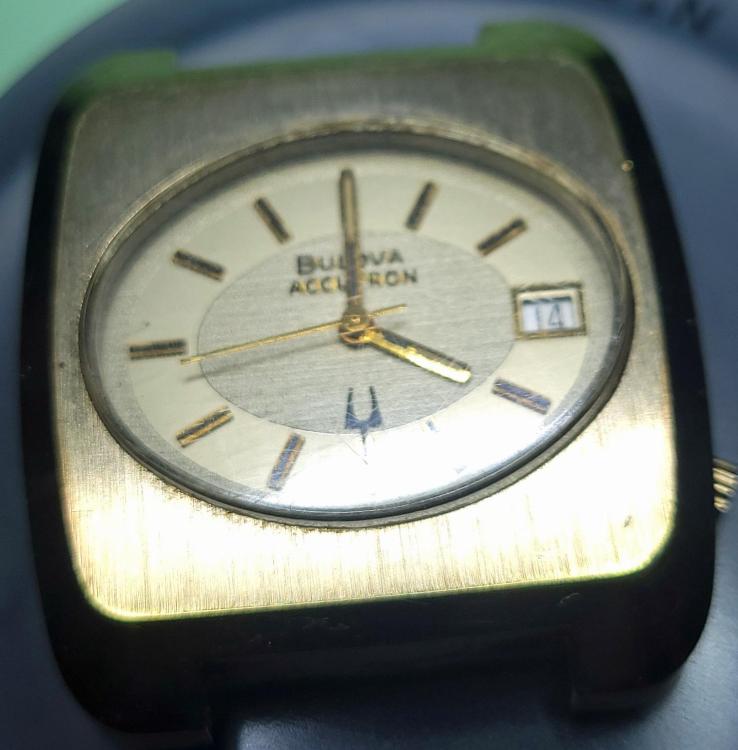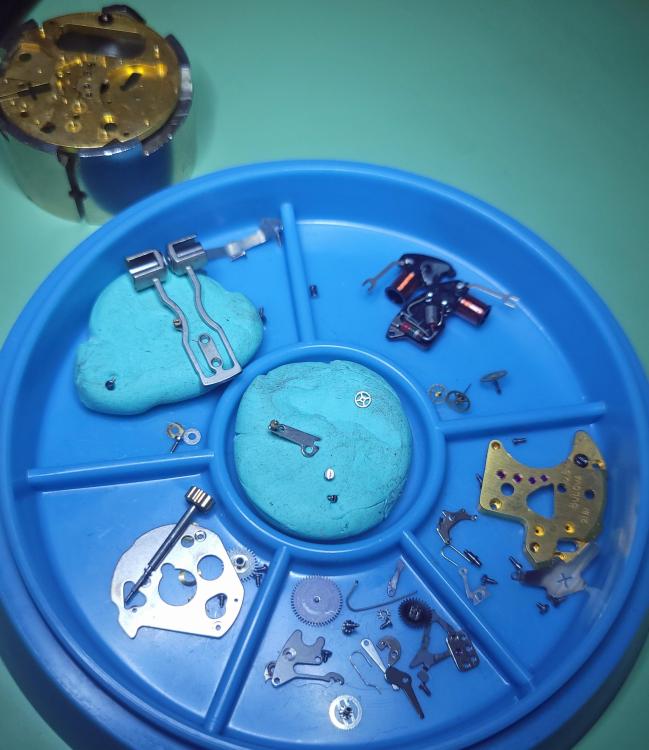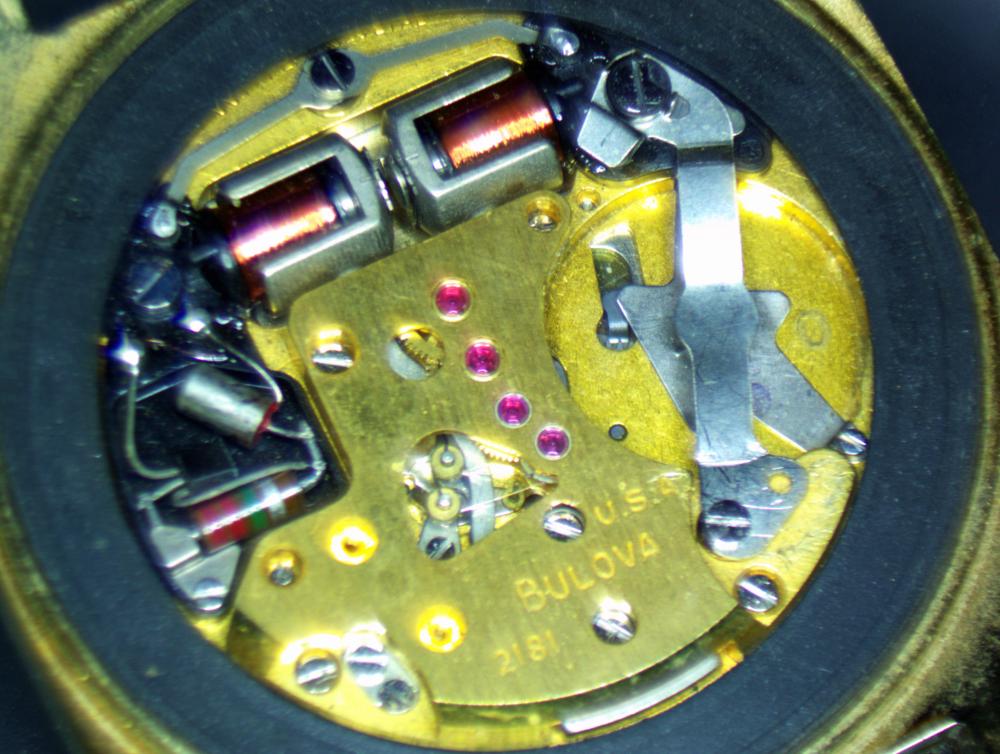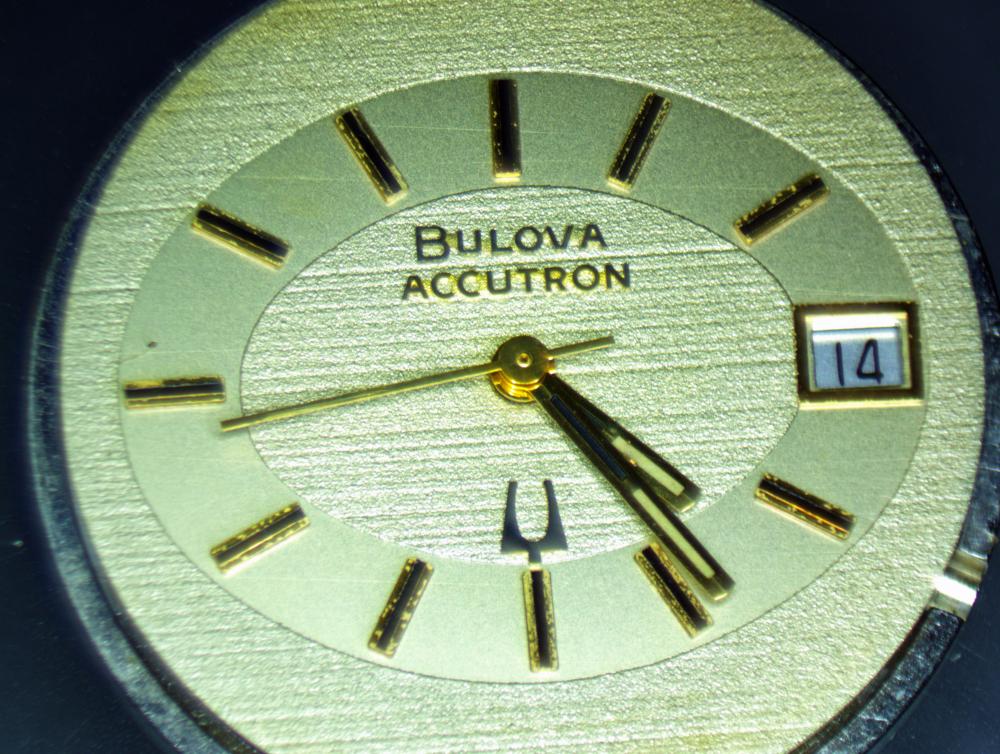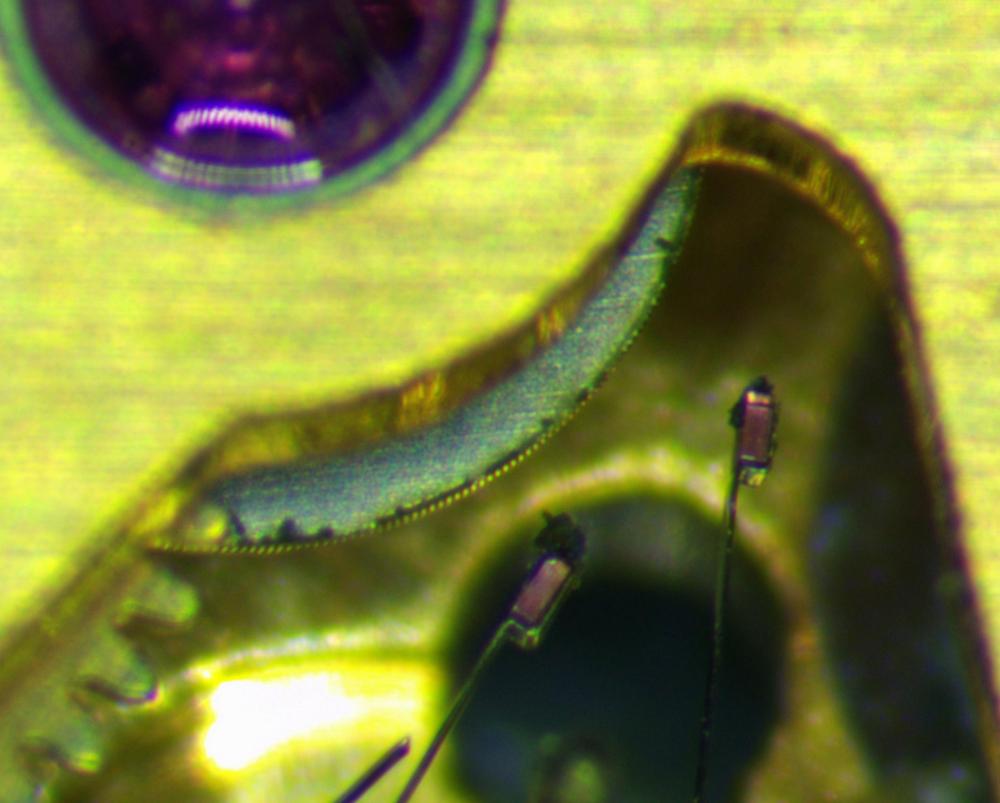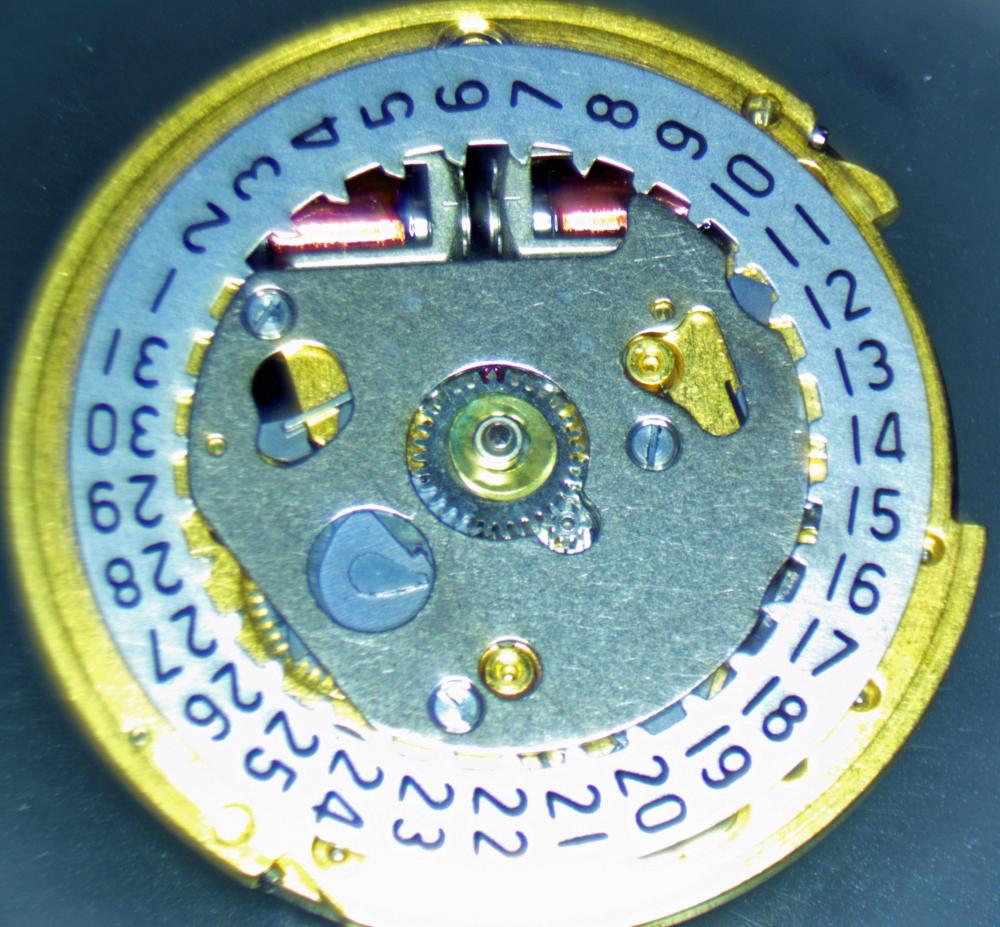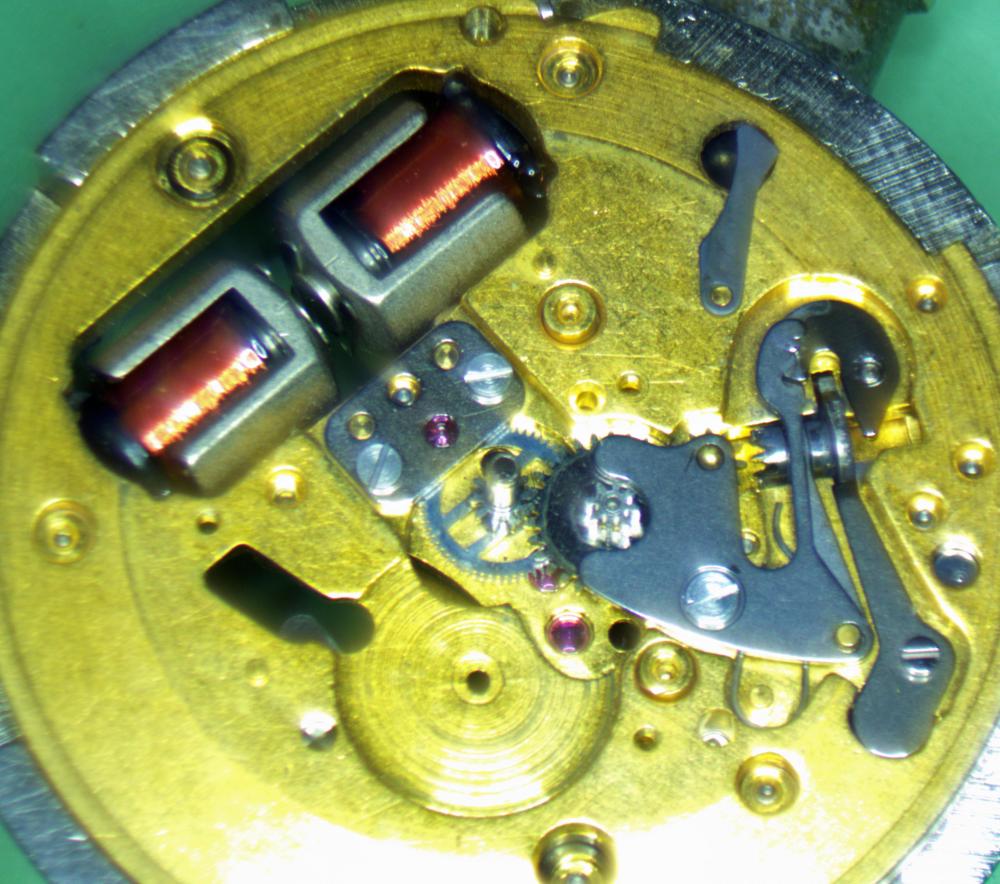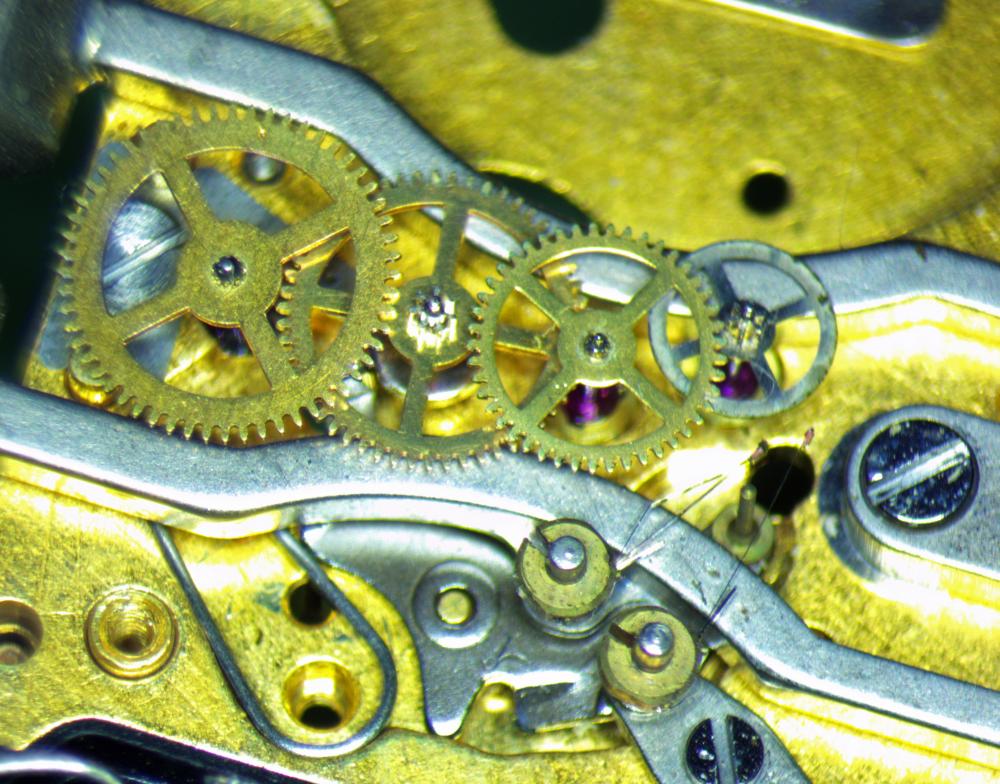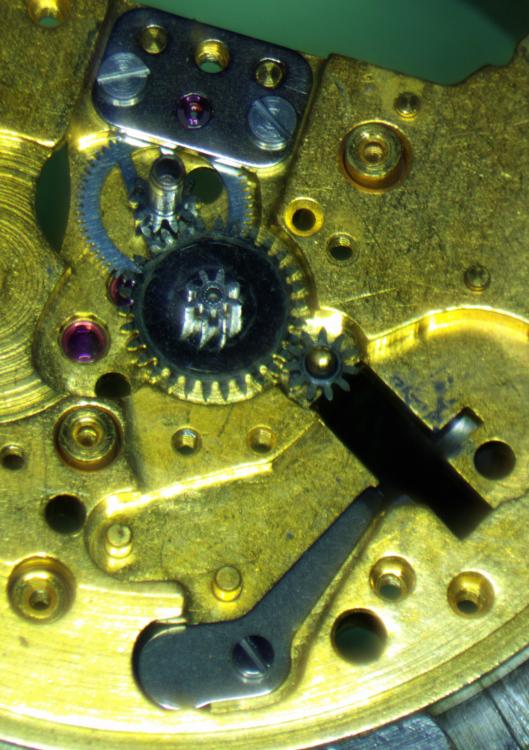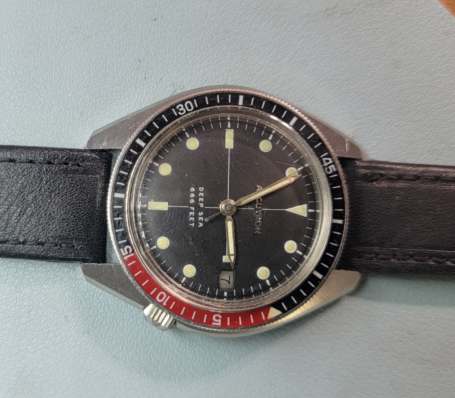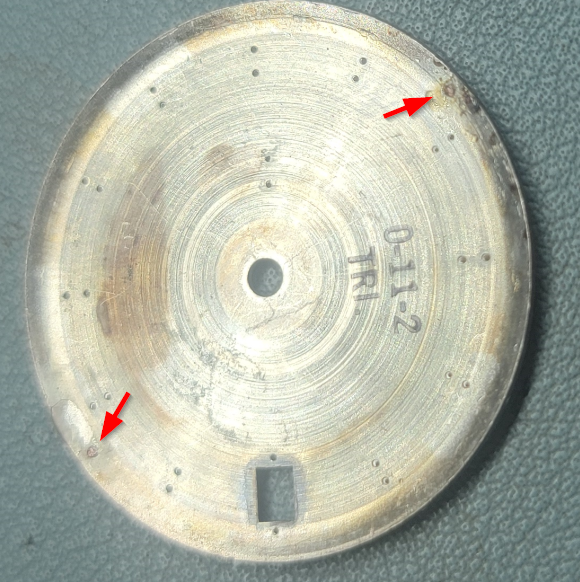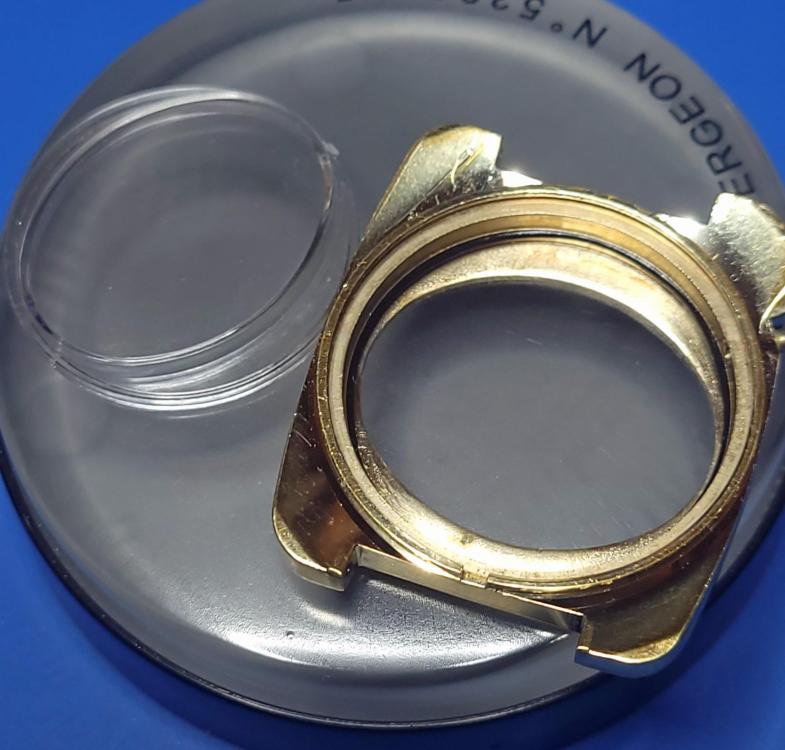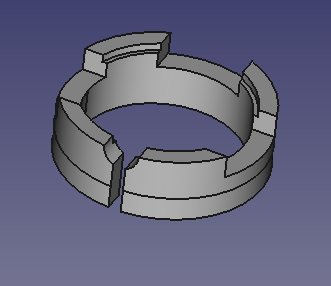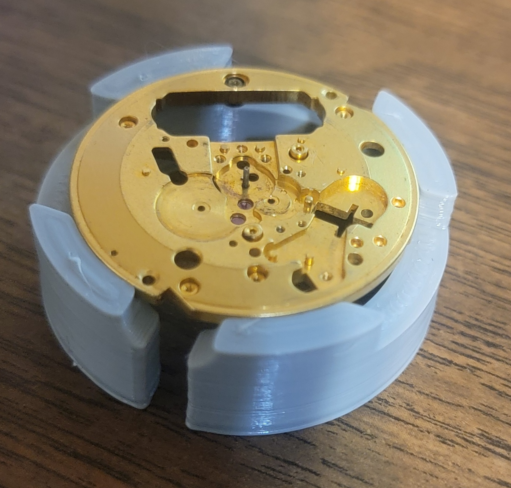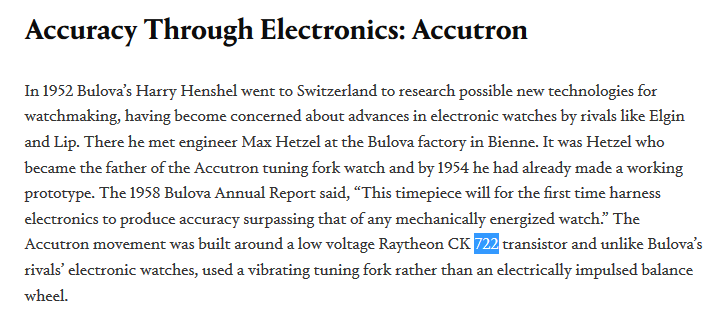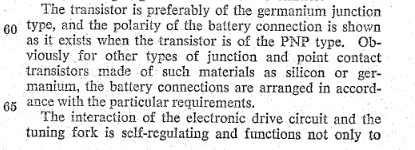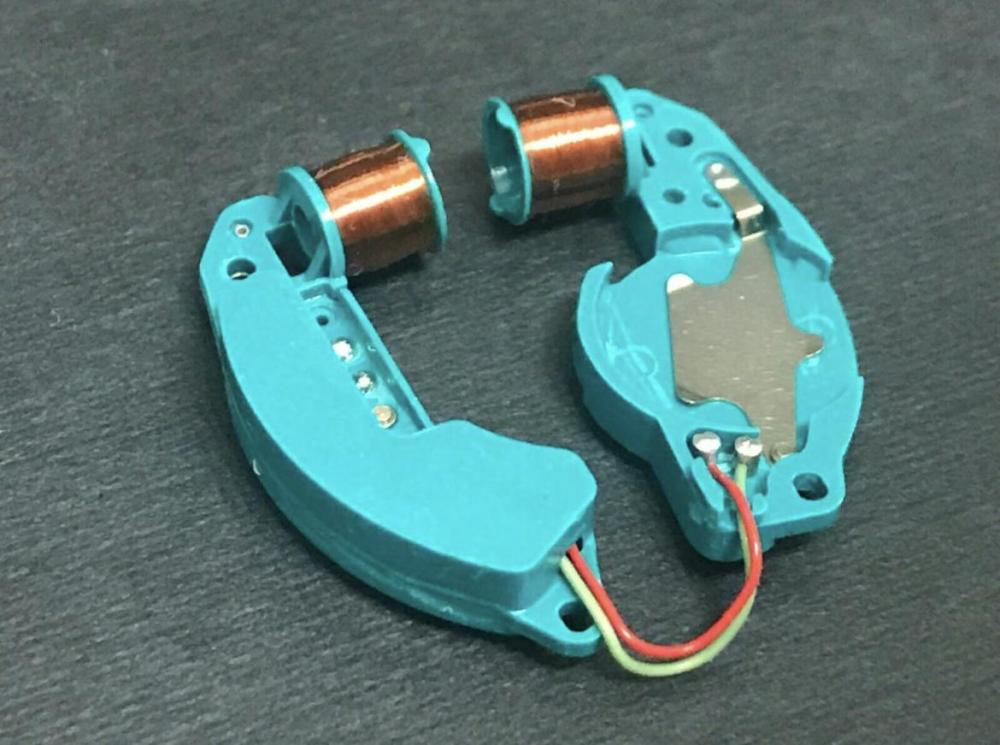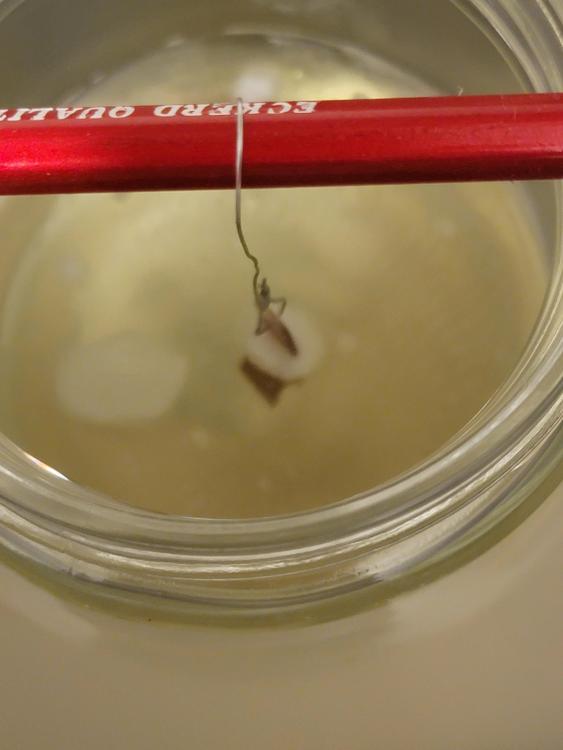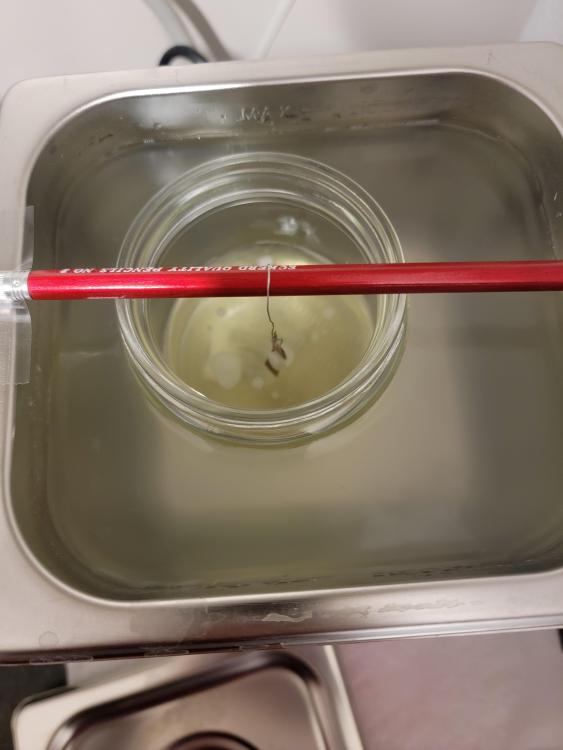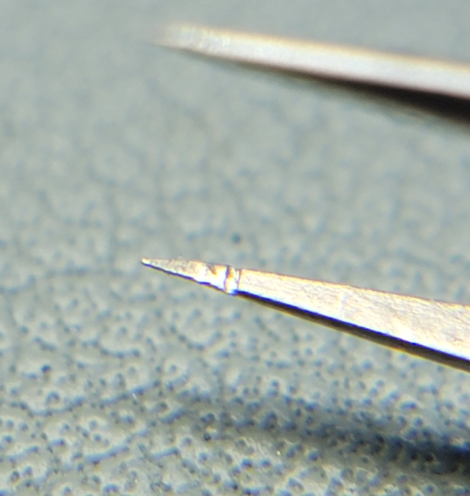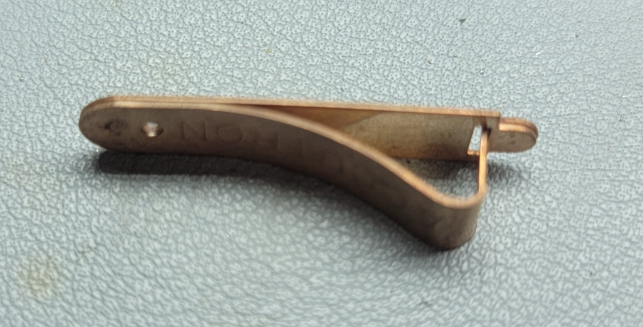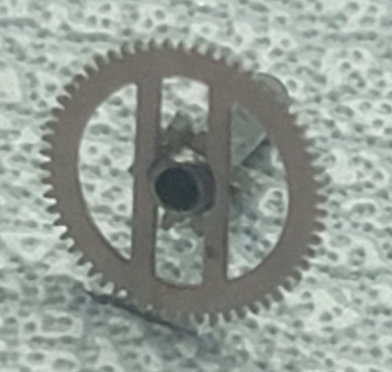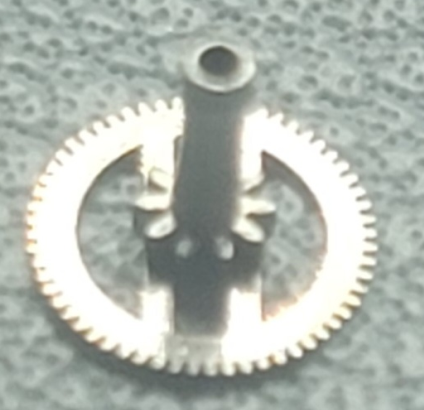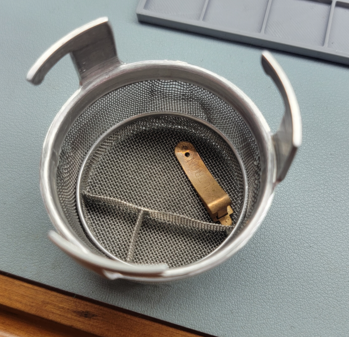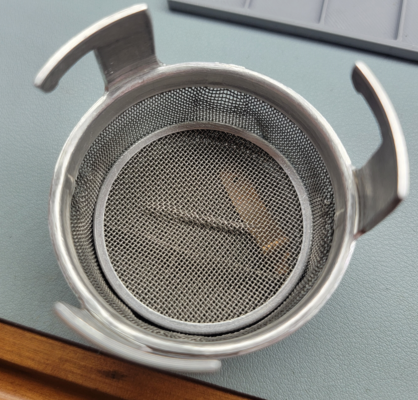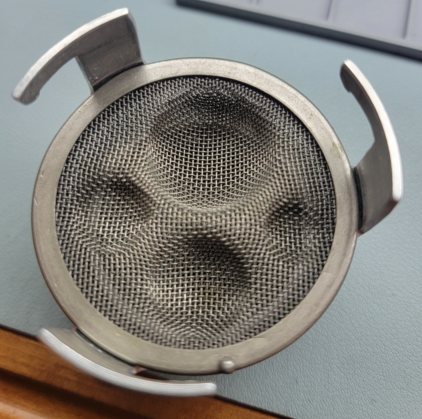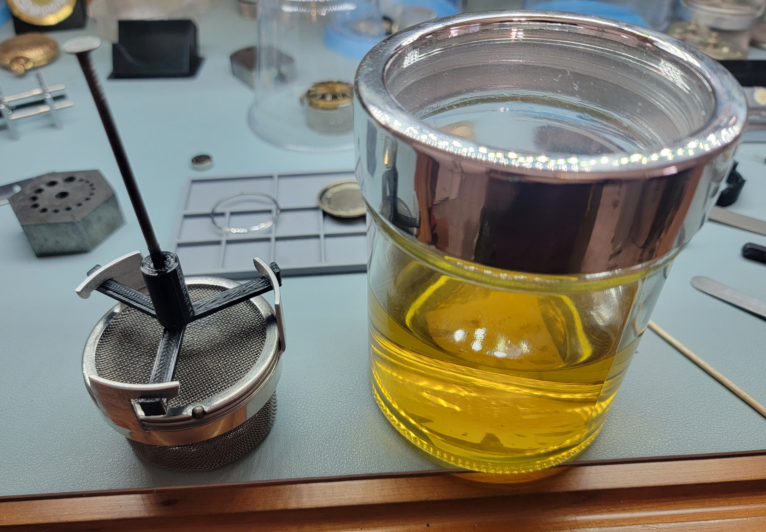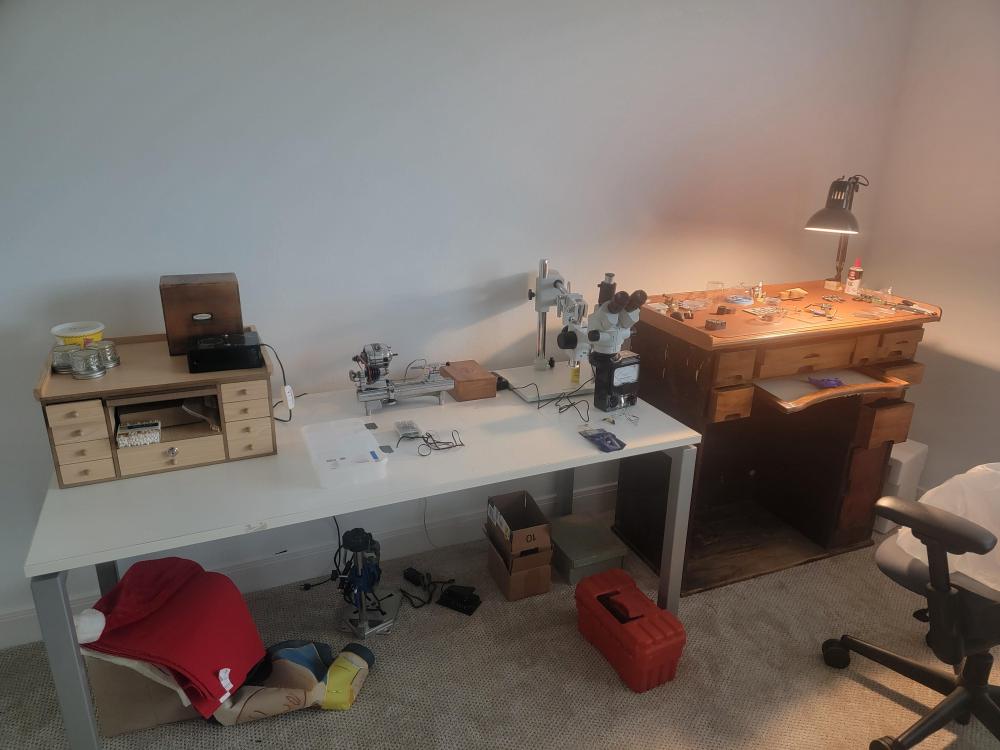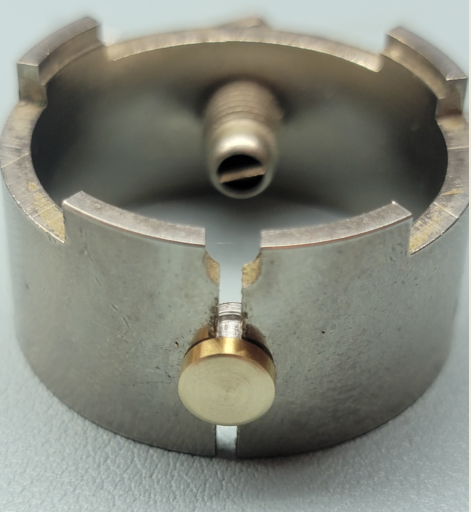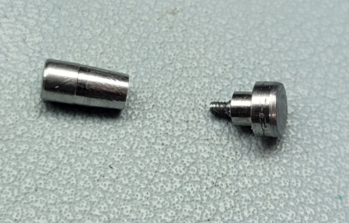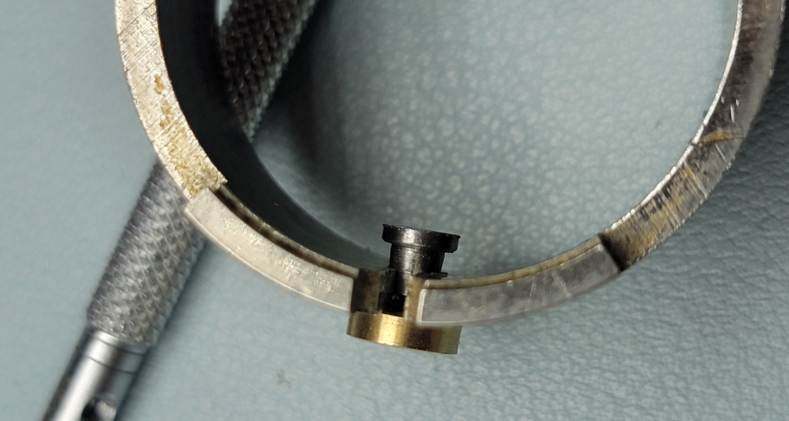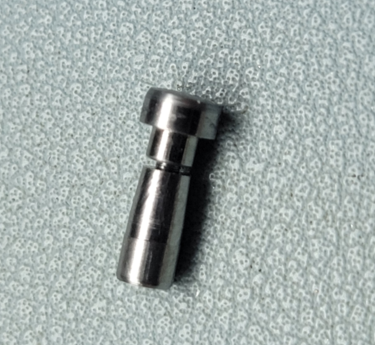Search the Community
Showing results for 'accutron' in topics.
-
Having had success replacing the resistor and capacitor in a few 218 and 219 circuits, I've gone down the rabbit hole trying to find a modern replacement transistor. I've searched everywhere I know to look for specs on the original transistors and come up empty. My last digital design class was too many decades ago, so I was hoping one of y'all out there is a EEE (Electronics Engineer or Expert) and can offer some advice. For example, let's say I'm considering an NPN digital transistor. When I look up the part, it's available with a built in 47k, 22k, or 10k ohm input resistance. How does one decide? I assume that's what the starred *R resistor in the schematic below is for. And then how do we make the decision between a digital and bipolar transistor?
-
Just got this guy from the eBay. Purchased as "for repair." First thing I notice is the contact spring in the battery hatch is missing. My dad recently asked me to repair his non-running Spaceview and it turned out that was the entire problem with his, so I put the world's tiniest ball of tin foil in there and what do you know. Looks like a good service is all it needs! One more quick note: according to the list from myBulova, this is a factory Spaceview. Nice!
-
Nice work. In the last year, I have been servicing Accutron 218s. I have the official Accutron hoder that provides electrical contact to the movement. It is a pretty clever design. There is a cut in the ring of the holder (shaped like a "C"). When in relaxed state, the holder is slightly smaller than the watch movement. You spread the cut slightly and drop the movement in and release. Very clean. I have made 3D versions of this setup. Have not explored using it generally for other movements.
-
My grandfather died back in 2004, and my mom gave me his Accutron. I've wanted to restore it for years, and finally have the experience and confidence to do so. Of course the first thing I did was slip and bend the pawl finger, but at least it's not my first rodeo and I was able to fix that. Not running with an Accu-Cell, but the index wheel is pretty grungy so I took it apart and powered the circuit without the train installed. The fork kicks up, but instead of a hum I get a pulsing vibration. Never seen that before. I checked the electronics, and the resistor reads about 990 ohms instead of the 2,200 ohms we expect. The capacitor reads 197 pF, which is reasonably close to the 220 pF we're looking for. I'm going to give it a thorough cleaning and see if it'll run, but I have a feeling I'm going to be replacing the resistor and capacitor. A much harder task on the 218 than on the 219. Edit to add in some circuit diagrams, in case anyone is here for 218 diagnosis help:
-
Background: Somebody sent me an "Accutron" that was a gift many years ago. Somewhere along the way, the Accutron died and somebody replaced it with an NH35. It, of course was too thick, so they removed the auto wind oscillating weight. Ouch!!! Since the dial feet did not match, they cut them off the Accutron dial and used sticky tabs to attach the dial to the NH35. What a frigging abomination!!!! Anyway, this "somebody" sent me two accutron movements in hopes that I could return the watch to its former glory. OMG, these were hacked up as well. But!!! I was able to make one functioning movement. Cleaned, oiled, and soon to be adjusted. The BIG issue now is the dial. I am pretty sure I cannot solder feet on the dial. I did give it a try. No bueno. Here is my idea. Drill holes through the dial where the dial feet belong. Then insert and glue posts (feet). I checked the visibility of the dial through the crystal and the drill holes would not be visible. Thoughts??
-
OK, I have recently services four Accutron 218s and disassembled another (my first) which is now a parts watch...lol. Feeling really good about my results and my methodology. Accutron recommends OL-207 for all but jewel settings. OK, if these watches I have serviced were lubricated in this way...I am not a fan! It appears to dry and then flakes everywhere. When confined (e.g., center wheel) it seems to gum up and freeze. I determined not to use it--NO. I am using Molykote for those lube points instead. Shields up--prepared for incoming!
-
After servicing about six with minimal issues, I have run across a couple that stump me. I think I mentioned one before that seemed electrically sound but did not hum. I have another. All components check to the extent that I have measured them (cannot measure transistor Beta). When measured on the test set, I get a little over 25uA. This is about right if the unit is not oscillating. 1.5V and a 2.2M bias resistor with a beta of 50 would get in the ball park of 20uA. A little more beta and you are north of 25uA. This further confirms that the circuitry is functioning. The cap measures about right. I do not believe its value is too critical anyway. It mostly serves as dc blocking and not establishing resonance. I tried another tuning fork and...no luck. I am going to drive this one to the end so that I can understand root cause.
-
Before I lose my mind, I could use some help with another o-ring issue. According to the case #, I have the correct o-ring (Bulova G852 for case #3423), which sits in a groove in the case. The crystal is supposed to press fit into it. The problem I'm having is the crystal drags the o-ring out of the groove when I press it in, no matter what I do. I have generously lubricated the o-ring. It does seem like the o-ring is a slightly loose fit in the groove, so maybe I need to go a size up from the factory one?
-
OK, I am on my fifth or sixth 218 service with great success. Once you establish a methodology, these are relatively easy. I am servicing a 218 D now and it will not hum I have verified the following -drive coils -phasing coil -resistors -capacitor -EB junction, CB junction (have not verified beta) Kind of at a loss. All connections seem to be fine. Wondering if the watch was accidentally demagnetized??? Using a compass, I verified that the tuning fork does have some magnetic attraction. Scratching my head.
-
Accutron 218 transistors
JohnR725 replied to ManSkirtBrew's topic in Quartz and Tuning Fork Battery Operated Watches
what? We live in the digital world everything is digital today except I believe this is a linear circuit seems like it should need something that's not digital. then I suspect pure digital transistors designed for high-speed switching might not actually be happy to biased it into to a linear mode. I wondered about this because for instance the 214 came out in the early 60s and I don't know how plentiful silicon transistors were? Then yes the 218 is later but the circuitry is basically very similar. out of curiosity as doing a quick patent search the see if it tell us what the transistors they used our and right this instant know they have not been to have schematics though. Then unlike general concept patents Bulova was very nice and made exact patents for a variety of their watches because it wanted the mechanical + aspect patented .then I did remember something about the transistor so I searched for a transistor number and Bulova this came up first all snipped out an image. Now you have at least one transistor that was used in tuning fork watches. So this will give you an idea of specifications. Then yes I really like where the meaning of Accutron comes from you can see it in the title down below. Which works out nice for them now that they have all kinds of electric watches including one powered by static electricity and it does not go against the name which everyone thinks means tuning fork watch. Yes you really should check out the nifty static electricity watch it's really quite amusing. https://www.hodinkee.com/articles/five-star-general-omar-bradley-special-bulova-accutron hadn't quite closed out my patent search basically the patents for the 214 we have this. then before I closed out my Google patent search added in NPN and it only came up three entries of attaching one of them as it says silicon. US3421309 Bulova NPN silicon.pdf -
HI. Does anyone know how to remove the coil coating on an accutron? I tried leaving it in pure acertone for a whole day: the coating softens but does not melt. Thank you
-
For the time when these were introduced, the technology was truly leading edge. The 218 movement seems solid...not difficult to service. But...and this is a BIG but, Accutron (really Bulova) fails at the non-tech stuff. While I like the two-piece back, the case quality is generally poor. The dials seem fine enough, but the hands are low quality compared to a nice swiss watch. I have one case where the crown interface appears to have been milled incorrectly. Not sure...still investigating.
-
When I clean the index wheel I put it in the Accutron index wheel holder. What have found is that while holding the arbor, the wheel flops around because the tweezer will not hold it in a fixed orientation. Well, I fixed that!!! I modified a set of 3C tweezers by adding a notch so that the index wheel arbor is held orthogonal to the length of the tweezer and will not wobble. The notch is on both legs of the tweezer but only one is shown.
-
This 218 Accutron center wheel (which functions like a cannon pinion) is loose resulting losing time due to slipping. Not sure if there is a way to tighten it. Funny thing, I had a donor so I stole the center wheel only to find that it was shorter! Yes, the donor had no date, but the fixing watch is day-date.
-
I have spoke about my remote Accutron repair center (my house in Bryan, TX). Here I will outline the cleaning methodology I will use. 1) the index wheel will be installed into the official Accutron holder (seen in the first picture). 2) the index wheel and holder will be placed in the bottom of an L&R basket and then covered (second and third pictures) 3) the two plates will be placed on top of the separator lid (not shown) 4) the compartmental holder will be where all of the wheels are placed, yoke, etc are placed (no parts shown in the pictures), and the top lid placed 5) the electronics, tuning fork, the pawl are separated out and placed into a petri dish. Using a syringe with needle, I will bath these parts with one-dip. 6) the basket will be immersed into a jar with L&R cleaner (what I show is ammoniated, but I am going to use non-ammoniated going forward (when it arrives). 7) the jar is placed into an ultrasonic machine for a short period (maybe 5 minutes) remove the basket and spin dry using an L&R spinning machine (not shown) 9) place the basket into a jar of L&R rinsing solution (not shown) and run in the ultrasonic for a short period 10) remove the basket and spin dry as before 11) place the basket into a second jar of rinsing solution and run in the ultrasonic for a short period 12) remove the basket and spin dry as before 13) the final step is to move the basket to the drying station of the L&R cleaning machine I would appreciate thoughts on this.
-
OK...more like a "place" than a "center." I will be spending half my time here, so I needed some way to do horology. Since Accutrons need a subset of my tools, and I have about 50 to work on, I decided that I could setup to do just Accutrons here. I still need a cleaning setup...working on that! I have the microscope, test set, and the hand tools. Today, I took an Accutron that was not working, opened it up, adjusted the index and got it running. It needs a cleaning, but I was proving the tool set to see if anything was missing. Hopefully I will solve the cleaning methodology over the next couple of weeks.
- 16 replies
-
- 11
-

-

-
I have a couple of these movement holders for 218 Accutrons. In order to mount the movement, the holder must be splayed ever so slightly and then released when the movement is in place. I have been splaying with a screwdriver, but this morning, I made an add-on tool that does the work for me. I turned a slight conical profile with the initial diameter equal to the hole in the holder in rest position. I turned to a larger diameter enough to open the holder enough for the movement to drop in. Then I tapped the small end and made a threaded button. The tool is mounted in the holder in a semi-permanent way. When you want to insert the movement, press the pin from the inside of the holder and it splays out. Once the movement is inserted, the outside butt is pressed so that the holder collapses on the movement. I made two of these. One is mounted on the holder with a brass button. The other I show sitting alone so that the structure is obvious. The second one uses the brass button--easier to turn and thread.
- 1 reply
-
- 4
-

-

Accutron 218 transistors
rjenkinsgb replied to ManSkirtBrew's topic in Quartz and Tuning Fork Battery Operated Watches
So-called "Digital transistors" are just transistors with appropriate resistors included in the package to allow them to be driven directly from digital logic ICs & microcontrollers etc. You definitely need a normal transistor for the Accutron. -
Hi there Somewhat of a novice collector tending to lean towards Hamilton vintage watches. Although I do have an Omega Polaris and an Accutron. Trying to play with battery replacement on my own having purchased a kit recently. My first challenge is how to get the back off of my Omega Polaris!


